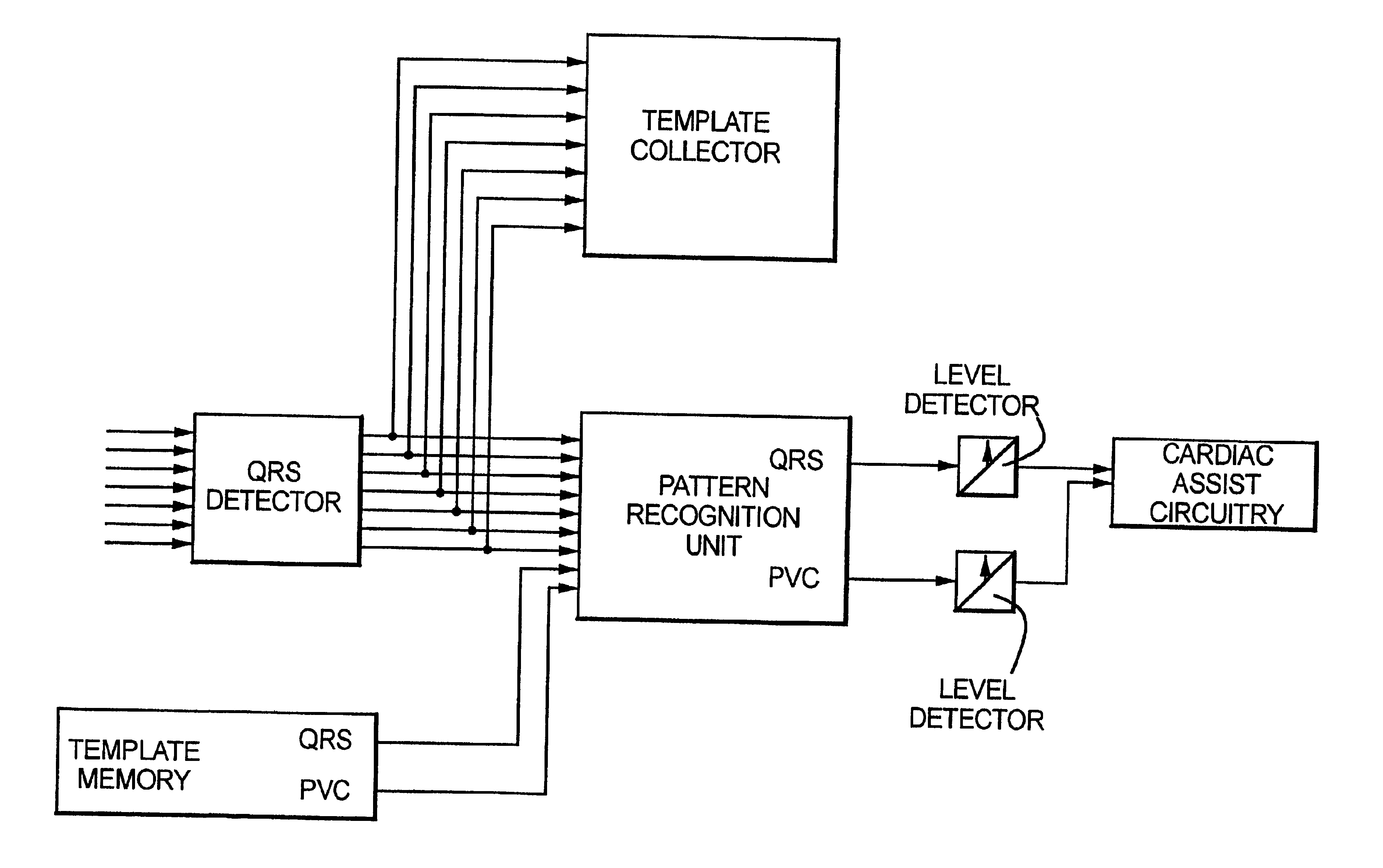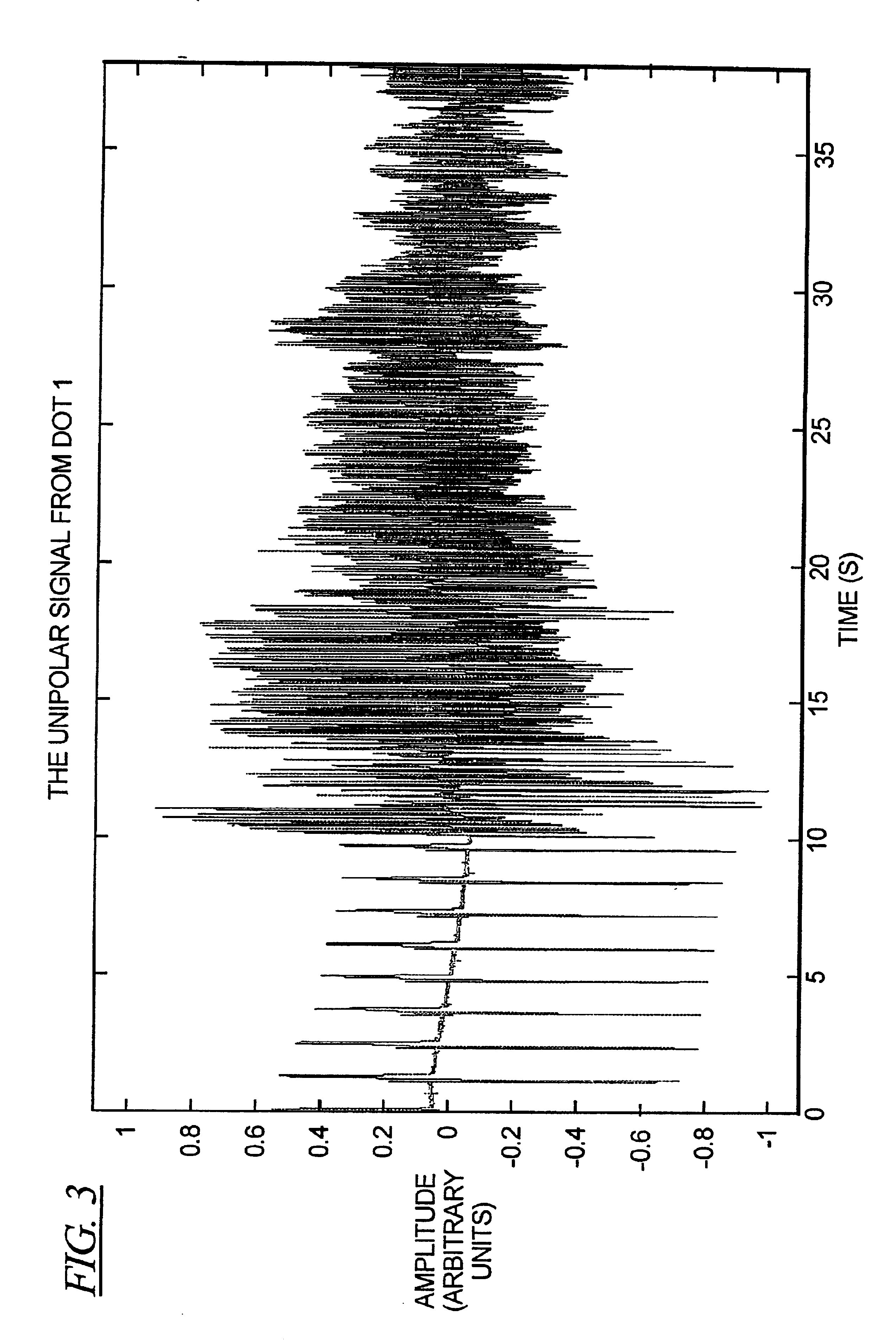Method and circuit for detecting cardiac rhythm abnormalities by analyzing time differences between unipolar signals from a lead with a multi-electrode tip
a multi-electrode tip and time difference technology, applied in the field of cardiac leads, can solve the problems of affecting the patient's health, affecting the patient's comfort,
- Summary
- Abstract
- Description
- Claims
- Application Information
AI Technical Summary
Benefits of technology
Problems solved by technology
Method used
Image
Examples
Embodiment Construction
[0031]An embodiment of an electrode lead for use with the circuit and method in accordance with the principles of the present invention is shown in FIG. 1, which is a view looking directly at the distal tip (greatly enlarged) of the cardiac lead. As can be seen in FIG. 1, the lead tip has a number of electrode dots distributed thereon, including a centrally disposed electrode dot 1 and a number of other electrode dots arranged relative to the centrally disposed electrode dot 1. In the embodiment of FIG. 1, six other electrode dots 2-7 are shown, for a total of seven electrode dots in the embodiment of FIG. 1. In the embodiment of FIG. 1, the electrode dots 2-7 are shown as being annularly arranged around the centrally disposed electrode dot 1, however, other locations are possible.
[0032]The axes shown in FIG. 1 are in arbitrary units and are solely for the purpose of providing a guide as to the relative placement of the electrode dots 1-7. Each electrode dot will have a diameter of ...
PUM
 Login to View More
Login to View More Abstract
Description
Claims
Application Information
 Login to View More
Login to View More - R&D
- Intellectual Property
- Life Sciences
- Materials
- Tech Scout
- Unparalleled Data Quality
- Higher Quality Content
- 60% Fewer Hallucinations
Browse by: Latest US Patents, China's latest patents, Technical Efficacy Thesaurus, Application Domain, Technology Topic, Popular Technical Reports.
© 2025 PatSnap. All rights reserved.Legal|Privacy policy|Modern Slavery Act Transparency Statement|Sitemap|About US| Contact US: help@patsnap.com



